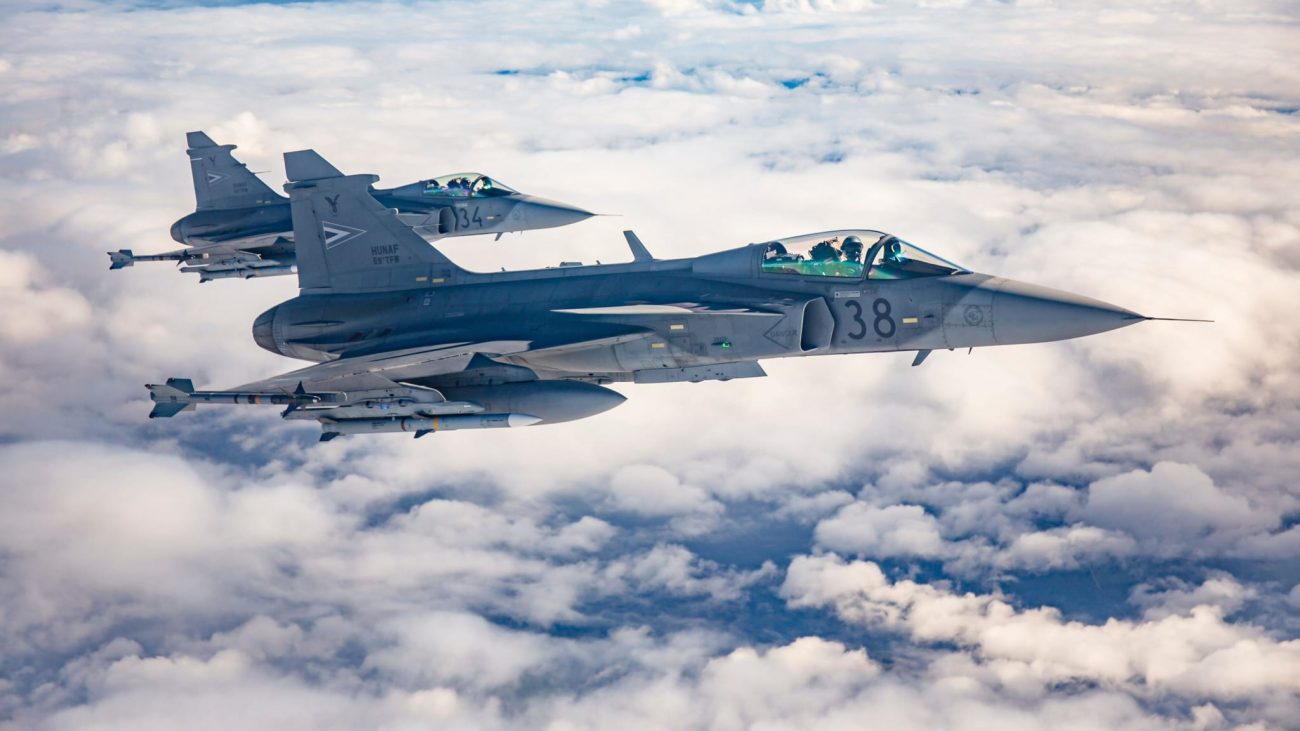As Sweden mulls joining NATO in light of the Russian invasion of Ukraine, it is worth looking at its Cold War-era airplane, Saab 35 Draken which was meant to take on the Soviets and safeguard Sweden’s sovereignty.
Sweden, known for its neutrality, had feared a spill-over of the Cold War that could have affected its sovereignty.
In the late 1940s, Sweden saw the need for a warplane that could intercept Soviet bombers at high altitudes and also engage its fighter jets. The decision was made to develop the Saab 35 Draken Supersonic Fighter, marking the beginning of perhaps the most daring chapter in the history of the Swedish Aircraft Industry.
The new fighter jet was required to provide large weapons storage, long endurance, and the ability to take off from short runways.
The Swedish engineers came up with a unique ‘double delta’ design feature that represented a whole new generation of aeronautical design that distinguished the Draken from other fighters.
The wing design consisted of two paired delta wings, with one delta wing within another larger delta wing. The inner wing has an 80 degrees angle for high-speed performance, while the outer wing has a 60 degrees angle for good performance at low speeds.
By the 1950s, this design resembled a kite, and it kept that nickname, though the translation of Draken is “dragon.”
Although the double delta design appeared promising, extensive testing was needed, and back in the 1950s, testing a new airplane design was a slow and arduous process.
In the absence of computer-aided testing and flight simulation, engineers extensively used wind tunnel tests and small-scale models to test the aerodynamic effects of the new airframe features.

Furthermore, Saab engineers needed real-life data for double delta design. So in 1952, they built a small test aircraft, the Saab 210, which was a scaled-down but flyable double delta wing design, nicknamed ‘Lilldraken’ meaning the little dragon.
The prototype of the double-delta Draken, not fitted with an afterburner, took the skies in late 1955. The second prototype, equipped with an afterburner, unintentionally broke the sound barrier on a climb during its first flight.
The Draken entered production in 1957.
The wings provided speed and maneuverability and the ability to carry more fuel and weapons; however, sometimes, the airplane would suddenly lose altitude due to instability, known as ‘superstall’. It would become uncontrollable regardless of pilot action, leaving ejection as the only option.
Those were the perilous times for pilots who were forced to create maneuvers to avoid these dangers. 179-Draken superstars resulted in 35-crashes that ended up killing four pilots.
The superstalls were finally overcome by the pilots with a “Cobra Maneuver,” which involved the rapid lifting of the nose so much so that the airplane would turn 90 degrees vertical to the ground. While a pilot would face the sky, the airframe would form an enormous airbrake, causing rapid slow down of the airplane.
Propulsion was provided by a single Svenska Flygmotor RM6B/C turbojet (Rolls-Royce Avon 200/300). The Draken could deploy a drag chute to reduce its landing distance.
The single-seat combat aircraft had a single engine and was equipped with two 30mm automatic cannons and Sidewinder air-to-air guided weapons.
The J35A Draken entered service in 1959 and it was followed by six different versions – J35B, SAk35C, J35D, S35E, J35F, and J35J – for the Swedish Air Force. It was the first European-built airplane to reach Mach Two – twice the speed of sound.
Each variant featured a significant enhancement in avionics, aerodynamic design, fuel capacity, or more weapons storage.
The SAk35C was a trainer aircraft that involved the conversion of 25 J35As into a two-seat school version. The S35E was a reconnaissance version with a camera sight for vertical and oblique image shooting.
Over the decades, more than 600 Drakens were built, out of which 51 were exported to Denmark. Finland assembled 12 under license and later purchased several ex-Swedish aircraft, and Austria bought 24 modified Drakens.
The Saab 35 Draken served as the main fighter-interceptor for the Swedish Air Force, and though it never faced real action, there is a high probability that it would have faired quite well against Soviet fighters.
The Draken enjoyed a stellar reputation and Austria even kept them in service until 2005, which means they flew for 50 years. The U.S. also used 12 formerly Danish Saab 35s as training aircraft until 2009.
- Written by Tanmay Kadam/EurAsian Times Desk
- Contact the author at etdesk@eurasiantimes.com
- Follow EurAsian Times on Google News




